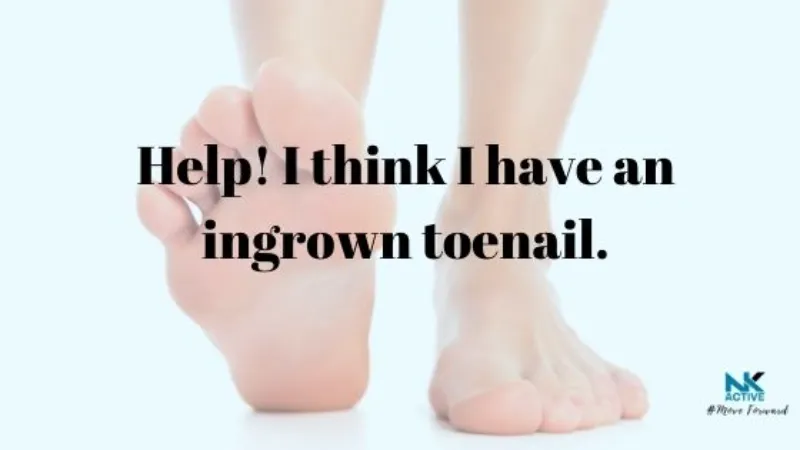
September 28, 2020
Help! I think I have an ingrown toenail.
Since launching our new core podiatry service, we have had a fair number of patients in clinic suffering with ingrown toenails. In this blog, Dr Charlotte talks you through what is an ingrown toenail and why it happens!
What is it?
Ingrown toenails, also known as onychocryptosis, is a painful condition of the toe.
It occurs when a sharp nail edge digs into the skin at the side of the toe. Pain and inflammation of the skin down the side of the nail often occurs first and it can affect any toe.
Why does it happen?
There are many reasons why you can develop an ingrown toenail:
- Genetically your nails may be predisposed to splaying or curling
- Tight fitting footwear/socks can irritate the nails and surrounding soft tissue
- History of injury or trauma
- Nail health (weak or brittle nails, excessive sweating)
- Medical conditions and medication affecting nail health
- Poor nail cutting technique
- Nail picking
Statically, younger people are more likely to get ingrown toenails, compared to older adults and the condition is often more likely in people who are active.
What are the common symptoms associated with this condition?
- Pain in the toe or nail region
- Swelling around the toenail
- Inflammation (redness and tenderness) surrounding the nail area
- Discharge (blood, pus or exudate)
It is also worth mentioning the signs of infection; hot, swollen toe with redness or darkening skin discolouration tracking up the foot and potentially discharge from the nail edge.
If you think you may have an infection, please contact your GP for a review as you may require antibiotics.
How is this condition diagnosed?
Usually a clinical assessment can help identify the condition either by your GP or a Podiatrist.
What can I do?
Initially, you can relieve the discomfort by bathing the foot in salt water for approximately 10 to 15 minutes. This can help reduce the chances of developing an infection and reduce inflammation.
You may need to cover the toe with a simple dressing to keep it protected.
Continue salt bathing and changing the dressings daily until you see your GP or podiatrist.
A podiatrist will be able to assess the nail and, if possible, remove the nail spike or section that is irritating the soft tissue. Sometimes this can resolve symptoms.
If symptoms persist or the toe is too painful, then a local anaesthetic can be given to numb the toe and an operation can be undertaken to remove a portion of the nail.
To prevent the section of nail re-growing back a chemical called phenol is used to cauterise the nail. You can find more information here about the procedure, the risks and our post op advice. #NKActive